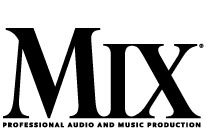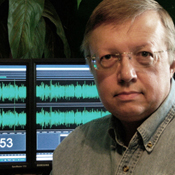 Former Chief Engineer, Woodland Studios and Sound Stage Studios, Nashville
“Chris first approached me about this project 3 years ago while I was Product Manager for Quantegy Recording Solutions. While we were not in a position to offer development and manufacturing we did encourage Chris to go forward with the project. Chris and I have talked several times during the development about various ideas for implementation. I was delighted that he invited me to be among the first to see the completed project. Briefly, he has developed a seamless bridge between a digital audio workstation and an analog tape machine. I must say, it’s a very elegant solution.
I’m duly impressed. Impressed with the scope and operation of CLASP, but even more impressed with Chris’ abilities. When he couldn’t find a developer for the project, he did it himself. He learned on his own, programming, power supply theory and construction, circuit board layout and interface design. The outcome is a product that you would think came from a major audio manufacturer.
In all, he has put together a great product and it should breathe new life into the old analog tape machines that are sitting in the closet. Get a demo of CLASP and see how it can capture analog tape sound into your digital audio workstation without sacrificing any speed.” — Mike Porter
Former Chief Engineer, Woodland Studios and Sound Stage Studios, Nashville
“Chris first approached me about this project 3 years ago while I was Product Manager for Quantegy Recording Solutions. While we were not in a position to offer development and manufacturing we did encourage Chris to go forward with the project. Chris and I have talked several times during the development about various ideas for implementation. I was delighted that he invited me to be among the first to see the completed project. Briefly, he has developed a seamless bridge between a digital audio workstation and an analog tape machine. I must say, it’s a very elegant solution.
I’m duly impressed. Impressed with the scope and operation of CLASP, but even more impressed with Chris’ abilities. When he couldn’t find a developer for the project, he did it himself. He learned on his own, programming, power supply theory and construction, circuit board layout and interface design. The outcome is a product that you would think came from a major audio manufacturer.
In all, he has put together a great product and it should breathe new life into the old analog tape machines that are sitting in the closet. Get a demo of CLASP and see how it can capture analog tape sound into your digital audio workstation without sacrificing any speed.” — Mike Porter News
W. Michael Porter
Tuesday, June 9th, 2009
 Former Chief Engineer, Woodland Studios and Sound Stage Studios, Nashville
“Chris first approached me about this project 3 years ago while I was Product Manager for Quantegy Recording Solutions. While we were not in a position to offer development and manufacturing we did encourage Chris to go forward with the project. Chris and I have talked several times during the development about various ideas for implementation. I was delighted that he invited me to be among the first to see the completed project. Briefly, he has developed a seamless bridge between a digital audio workstation and an analog tape machine. I must say, it’s a very elegant solution.
I’m duly impressed. Impressed with the scope and operation of CLASP, but even more impressed with Chris’ abilities. When he couldn’t find a developer for the project, he did it himself. He learned on his own, programming, power supply theory and construction, circuit board layout and interface design. The outcome is a product that you would think came from a major audio manufacturer.
In all, he has put together a great product and it should breathe new life into the old analog tape machines that are sitting in the closet. Get a demo of CLASP and see how it can capture analog tape sound into your digital audio workstation without sacrificing any speed.” — Mike Porter
Former Chief Engineer, Woodland Studios and Sound Stage Studios, Nashville
“Chris first approached me about this project 3 years ago while I was Product Manager for Quantegy Recording Solutions. While we were not in a position to offer development and manufacturing we did encourage Chris to go forward with the project. Chris and I have talked several times during the development about various ideas for implementation. I was delighted that he invited me to be among the first to see the completed project. Briefly, he has developed a seamless bridge between a digital audio workstation and an analog tape machine. I must say, it’s a very elegant solution.
I’m duly impressed. Impressed with the scope and operation of CLASP, but even more impressed with Chris’ abilities. When he couldn’t find a developer for the project, he did it himself. He learned on his own, programming, power supply theory and construction, circuit board layout and interface design. The outcome is a product that you would think came from a major audio manufacturer.
In all, he has put together a great product and it should breathe new life into the old analog tape machines that are sitting in the closet. Get a demo of CLASP and see how it can capture analog tape sound into your digital audio workstation without sacrificing any speed.” — Mike Porter Mark Gray
Tuesday, June 9th, 2009
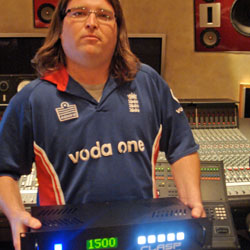
Engineer and Producer
The Killers , Britney Spears , Timbaland , Jamie Foxx , Celine Dion , Usher, Guns N’ Roses
"I am just blown away by the CLASP, I am definitely getting one. Endless Analog has brought the standard of audio back with this box."
— Mark Gray
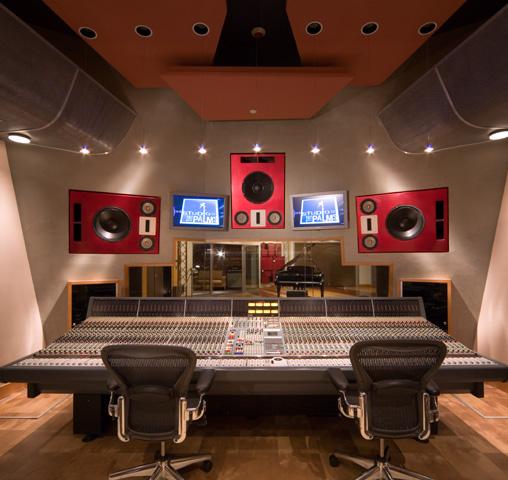
Eric Darken
Sunday, June 7th, 2009

World-Renowned Percussionist
Taylor Swift, Bon Jovi, Amy Grant, Keith Urban, Rascal Flatts, Bob Seger, Carrie Underwood.
“Working with this system is so efficient plus it really sounds great – the percussion on playbacks was so warm, punchy and reminded of the days when I worked regularly on two inch. This is going to be a wonderful tool for those who want that two inch sound with the speed of harddisk recording…very cool!” — Eric Darken
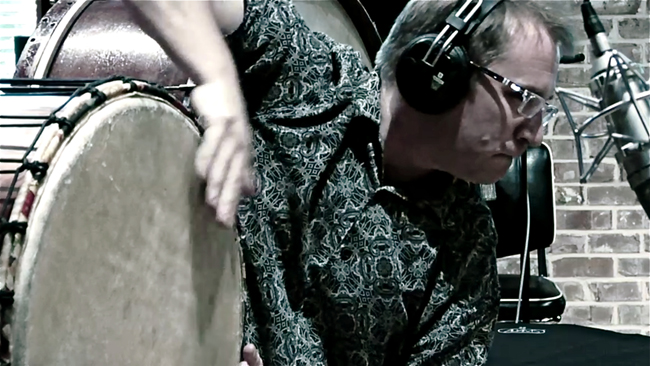
Chris Graffagnino
Sunday, June 7th, 2009
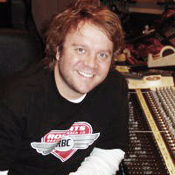
Session Guitarist
Erin McCarley, SheDAISY, Natalie Grant, Michael W. Smith
“I tracked guitars with CLASP last week. It works so well I actually forgot there was a tape machine running.
Very impressive !!” — Chris Graffagnino
Jim “Z” Zumpano
Sunday, June 7th, 2009
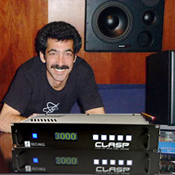
World Renowned Producer, Engineer, Mixer
Studio Owner & Founder – ZAC Recording Of Atlanta
Select Credits: Collective Soul , Babyface , TLC , Tony Braxton , Bobby Brown , Whitney Houston
“CLASP has given my lonely tape decks new ‘reason to live’!!!. As a studio and equipment owner, I am thrilled that I have regained my $100,000+ dollar investments in analog!! If CLASP could do what it does for reviving the future of analog and apply this to the US economy, Obama would be ordering multiple units!!!” — Jim “Z” Zumpano
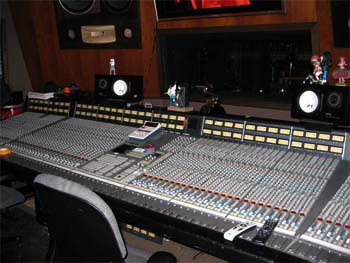
Zac Recording – Studio A – Stonehenge
Digidesign Grants Full Developer License to Endless Analog
Monday, April 6th, 2009
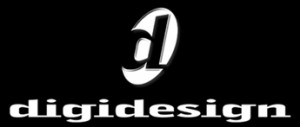 Endless Analog’s CLASP hardware interface
Nashville-based Endless Analog, which manufactures the CLASP (Closed Loop Analog Signal Processor) system, announces that Digidesign has granted the company a full developer license. Endless Analog can now develop and release a certified Pro Tools version of CLASP, heralded by many as a product able to preserve the future of analog recording.
Endless Analog’s CLASP hardware interface
Nashville-based Endless Analog, which manufactures the CLASP (Closed Loop Analog Signal Processor) system, announces that Digidesign has granted the company a full developer license. Endless Analog can now develop and release a certified Pro Tools version of CLASP, heralded by many as a product able to preserve the future of analog recording.
“CLASP is very cool,” says Jeff Matulich, head of Digidesign Developer Partnerships. “We think it will add value to Pro Tools.”Producer/engineer Chris Estes, the president of Endless Analog, is excited to begin demonstrating how to use CLASP with Pro Tools. “We have performed all of our demos of the product with Nuendo and Logic because we were waiting for full access to the Pro Tools SDK,” Estes says. “Now that we are developing a certified Pro Tools version of CLASP, I hope that audio pros will be assured it does work with all formats.” Estes says he looks forward to working closely with Digidesign as the company rolls out CLASP during this quarter. CLASP is designed to successfully bridge the gap between analog tape and digital recording. Alvin Speights, a Grammy Award-winning mix engineer for artists such as India Arie, Outkast, TLC, Madonna, and Michael Jackson, attended a demonstration of the product. “CLASP is hot,” Speights says. “It makes me want go back to tape. The function of the CLASP makes the tape experience as easy as Pro Tools. I love it!”
Jim “Z” Zumpano, a producer and mixer who owns Zac Recording and Rentals in Atlanta agrees. “CLASP has given my lonely tape decks new ‘reason to live.’ As a studio and equipment owner, I am thrilled that I have regained my $100,000-plus dollar investments in analog.”Endless Analog states that “with the use of CLASP, analog tape recording can once again become the norm but now can be experienced easily and effortlessly with the use of any Digital Audio Workstation (DAW). Endless Analog’s product allows you to achieve the warm and expressive sound of real analog tape while recording and editing with the speed of your DAW.” For more information, visit www.endlessanalog.com. LINK TO MIX MAGAZINE ARTICLE >
BUSINESS TENNESSEE MAGAZINE – Endless Analog Across the State
Thursday, January 1st, 2009
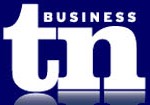
By Kyle Swenson
Found in Translation
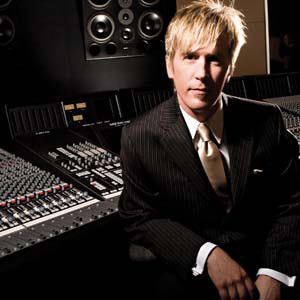
A new technology tries to recapture the warmth of analog in digital recording
It’s one of the music industry’s fiercest debates: digital or analog?
In the face of the recording world’s ever-growing need for speed, most artists and engineers have abandoned traditional tape machines for the easy production of digital recording, exchanging the classic warm analog sound for the flat feel of computer-based production.
But if one Nashville producer has his way, all that will change.
This summer, area musician and producer Chris Estes and his company Endless Analog unveiled the Closed Loop Analog Signal Processor (CLASP) system, a combination of hardware and software that allows users to digitally record with analog tape machines, bridging the gap between the much-loved sound of the classic technology and the convenience of 21st-century production.
“It’s going to become the new standard,” Estes says. “Some people are still having a hard time wrapping their heads around it because it’s the opposite of what everyone knows and is taught.”
A former musician and current producer, Estes first began to toy with the idea of wedding advanced technology to analog when he became fed up with the poor quality of digital sound. Knowing that many audiotape companies were nervous about the decline in analog recording, Estes shopped his ideas around to major manufacturers, hoping one would team with him and cover research and development costs. Although the companies were enthusiastic, they chose not to commit funds to spend on Estes’ idea.
Instead, Estes and his wife Amy decided to pursue the idea on their own. “We’ve spent the past several years in the music industry, and we’ve been investing our time and our money and our talents in other people,” Estes says. “We said we were going to invest in ourselves for once.”
Financing the research himself, Estes spent more than two years developing the CLASP system. The technology records using analog, but simultaneously transfers the recording in real time into a digital machine, where the track can be quickly altered or tweaked.
When Estes debuted his technology this summer at a local meeting of the Audio Engineering Society (AES) at Ocean Way Studios, it was immediately apparent CLASP could create a sizeable buzz. “Here in Nashville, it was standing room only,” Estes says. “We had to break it into two different demonstrations just to fit people in, and we received standing ovations.”
The industry excitement over CLASP is only growing. At an appearance at this year’s AES Convention in San Francisco, Estes came face to face with recording industry legends such as Chuck Ainlay and Alan Parsons, both of whom were interested in purchasing a system.
“It’s really the best of both worlds,” says Mike Poston, a Nashville sound engineer who has worked with producers and artists such as Ainlay and Mark Knopfler. “Digital can’t really duplicate the sound of analog tape, and CLASP gets rid of the negatives that we had with analog. It won’t be for everyone, but I think it will extend the life of analog.”
The retail price for the system is around $9,000 and can be built to each client’s specifications. Currently, the company sells the products themselves, but Estes is working to partner with various audio companies that will offer the system as well.
“This isn’t really something you sell at the local music store. It’s one of those things where a customer has specific needs, and they call me up and say, ‘Hey, I’ve got this type of tape machine,’” Estes says. “So we build a unit specifically for that client.”
Currently working with only his wife and one other employee, Estes says he plans to grow the business as much as is called for by incoming orders. And if the industry’s initial reaction is any indication, the CLASP system may revolutionize how music sounds.
“We project that we will be selling a lot of these things,” Estes says. “There’s a lot of movement right now to change the standard, and this will do that.”
Analog In The Studio: Nostalgia Ain’t What It Used To Be
Tuesday, December 9th, 2008

Many of us dream of vintage consoles and recorders in our studios, but reality takes over when we realize that we don’t have a place to put them or can’t even get one through the door. Studios used to be large: not just the recording space, but the control room as well. Consoles of that era were all hand-wired, built to order one at a time, and few were made in any significant quantity. A recent tally of the Trident A Range consoles from the mid 1970s—much revered for their EQ—shows that about 13, in total, were ever built. Many of these consoles were constructed on-site with chassis wiring often done by studio engineers in between sessions and were truly one-of-a-kind. Few of these consoles survive intact today; those that escaped cannibalization or the wrecking ball generally reside in the few remaining high-dollar studios or in personal studios of wealthy artists.
The cost? Initially $60,000 to $100,000, which, in today’s dollars ($250k-450k), is in the ballpark of the cost of a new large-frame SSL or API console, so there isn’t a big change there. And, like in the heyday of large studios, only a handful of these large-format consoles are being sold and installed today. Such consoles were originally mated with 16- and 24-track analog recorders from Ampex, 3M, Studer, and later MCI and Otari. Today’s studios sporting a large console usually have an analog recorder the size of washing machine to go along with it. A two-inch analog recorder typically cost in the range of $1,000 to $1,500 per track—comparable to a modern Pro Tools system with high grade A/D and D/A converters.
What Has Changed
So have things really changed very much? Of course they have. The majority of today’s studios are built on a totally different scale. Now $20,000 can equip a reasonably highly capable DAW-based system, and minimalist personal studios—which represent the largest market segment—can be productive with an investment of 1/10 that amount.
The console and recorder of the 1980s control room were accessorized with little more than a reverb plate and a few compressors. A studio chose its console based on its designed-in characteristic sound. If you were a Neve-based studio, you attracted clients who preferred that sound over the sound of the studio across town with the API or Harrison console.
Downsizing, personalization, and changes in the way most studios operate today contributed to the manner in which “basic” studio equipment has evolved and how it is accessorized. With few studios physically equipped to track a full band or orchestra playing together in a room, the demand for a recording console with a large number of inputs has greatly diminished.
A taste of “the warm analog sound,” even when working with just a few inputs, resulted in clever engineers and entrepreneurs packaging input channel modules from decommissioned large-format consoles into convenient rack-mounted signal processors, bringing characteristic sound of a vintage console to the modern digital control room. Most of the available genuine console modules have been racked up and sold, so a plethora of new and fairly accurate replications of the older console modules appeared in rack-mount format.
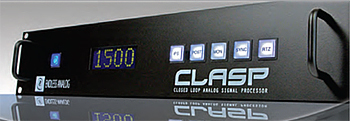
Endless Analog's CLASP—an interface linking DAWs and classic analog tape machines—is a testament to the evergreen desire for analog processing in the studio.
Compressors and limiters used in studios of the 1980s were borrowed from related industries. The limiter was a staple in the broadcast studio, primarily to prevent overmodulation of the transmitter. As a standard component in a disk mastering system, the limiter was used to prevent the cutting stylus from jumping out of the groove, ruining the master and perhaps damaging the cutter head while allowing a higher average level to be cut on the disk. As multitrack recording became the norm in the studio, the desire to compress individual tracks to fit them into a complex mix as well as to keep the signal as far above the tape noise floor as possible sent new customers into the broadcast market for their UREI LA2 limiters (as well as dumpster-diving for the hard-to-maintain Fairchild 670 limiter that was being replaced in mastering labs). There’s still a demand for the many new analog compressors in the marketplace—some re-creations of the classics of the ’70s and ’80s, and some new designs.
One problem that has flummoxed a lot of digital studio owners who crave the traditional analog compressor or a classic equalizer in line when tracking is this: Where the heck should you plug the darned thing in? The configuration of a mic preamp integrated with a digital-toanalog converter—often incorporating a FireWire or USB computer interface—leaves no opening in the line level signal path for an analog processor. Manufacturers of these front-end boxes have finally caught on, and today we’re seeing devices such as the Mackie 1200F (recently reviewed in PAR) or the Focusrite Saffire Pro26 with normalled insert send and return jacks immediately following the preamp, at least on selected channels.
On Analog Recording And Tape
One retro area that’s been neglected is analog recorders. It’s not that nobody wants one, but nobody’s building them any more—though ATR Service’s Mike Spitz says he still has plans to do so. On one of the audio forums I frequent, hardly a week goes by when someone doesn’t ask about using an analog recorder to “warm up” a digital recording. What they often don’t realize is that the sound that they’re dreaming of isn’t as simple as using tape as a signal processor; it’s a product of the entire recording process of the era. There’s a sometimes desirable sound quality associated with tracking particularly drums and bass on an Ampex MM-1200 or Studer A-80, but you won’t reach analog Nirvana substituting a wellused but more accessible TASCAM 80-8 or your grandfather’s TEAC rescued from the attic. That approach will only serve to remind you of why people were happy to move away from analog tape.
Analog tape is still a viable recording medium. Spitz overhauls classic broadcast and studio recorders and is probably more committed to the preservation of analog recording than anyone else today—so much so that he built a factory in the USA to manufacture analog recording tape after 3M and Quantegy (Ampex) stopped production. Mike will tell you that, depending on the tape you choose and how the recorder is adjusted, tape is capable of providing a wide sound palette, not just “warmth.”
For those willing to take the plunge, there are still plenty of two-track Ampex AG 440s available. These are built to last a lifetime, can be had cheaply, and all but the worst of them (if not stripped for parts) can be put into good-as-new condition for under $1,000. In Europe, a Studer — because of the better parts availability over there — might be a smarter investment. Two-inch 16- and 24-track recorders are cheap as dirt these days. Unlike much of today’s digital gear, there’s more to using an analog recorder than simply buying it and plugging it in. You’ll need some basic test equipment, a calibration tape, and the willingness to learn to keep it in adjustment. With quarter-inch tape selling in the ballpark of $50 and two-inch tape at around $250 per reel, feeding these beasts is a serious commitment.
Lots of what was good in the ‘Good Old Days’ is still available as genuine vintage gear, modern vintage recreations, and newly designed analog gear designed to integrate nicely with today’s digital systems. You don’t have to be nostalgic for the old gear and the old ways — those options are still available.
Mike Rivers has a long list of engineering credits with the Smithsonian and is the author of the last Mackie HDR manual.
CLASP Wins PAR Excellence Award
Friday, October 17th, 2008
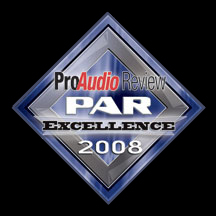
PAR Presents 2008 PAR Excellence Awards at AES
San Francisco, CA (October 17, 2008)–Pro Audio Review presented its 12th Annual PAR Excellence Award to professional audio companies who introduced significant new products at the AES Convention held October 2-5 at the Moscone Center.
Endless Analog’s CLASP (closed loop analog signal processor) were among the winning products chosen by a panel of audio engineers, professional end-users and reviewers who annually select the awards for Pro Audio Review. Products are chosen for the PAR Excellence Award based on their potential to enhance the quality of an audio professional’s work. “We are excited and full of gratitude to have been chosen for this award,” says Amy Becker Estes of Endless Analog. “AES was incredible this year and we are glad to see more and more professionals recording with Analog Tape.” The Criteria for the PAR Excellence Award includes innovation in design, performance/value ratio, enhanced features, and performance improvements over previous versions.
CLASP Scores #1 Single in Germany with Music Artist Derek Sholl
Wednesday, October 15th, 2008
By Harold Dunn
Nashville TN – GermanyNashville country music artist Derek Sholl is on his way. His current hit radio single “(I’ll be) Here” shot to #1 in Germany this week. The single was recorded and produced by Chris Estes. “We recorded Derek’s single using analog tape and CLASP”, says Estes. “Derek was on a tight schedule so we had to work very quickly and efficiently. CLASP allowed us to do just that. When we started the recording session, we did a shootout, we tried recording Derek’s’ vocals both to digital and analog. During the comparison, analog tape with CLAS P was the unanimous winner, hands down. “Using CLASP with our Studer 827 and Nuendo, allowed me to work with incredible speed recording Derek’s vocals and I was able to perform comping and editing on the fly while simultaneously recording to tape.”
Click here to visit the German Music Chart
MIX MAGAZINE – Mix Certified Hits Awards honors CLASP
Tuesday, October 14th, 2008
- Allen & Heath ZED R16
- Cakewalk SONAR V-Studio 700
- CLASP Closed Loop Analog Signal Processor
- DiGiCo SD8
- Digidesign Pro Tools 8
- JBL EON 500 Series
- Korg MR-2000S
- Neutrik ConvertCON
- Soundcraft Si3
- Universal Audio UAD-2
Technology Highlights of AES 2008
Monday, October 13th, 2008
Analog Comes Alive in a Digital World
Sweet Analog Outboard “Among the bright new ideas at AES was CLASP (Closed Loop Analog Signal Processor). The brainchild of Nashville producer/engineer Chris Estes, CLASP turns your 2-inch analog deck into a tape-flavored “plug-in” for your DAW. The system consists of a hardware interface, a VST plug-in (one for every channel), and a sync cable between the box and your recorder. Just run the session from your DAW as usual and CLASP performs real-time, synched transfers from the repro head of your deck. As the entire length of a reel of tape is used, there’s no waiting for rewind while quickly shuttling between session markers in your DAW.” Click here for the Mix Magazine Online LinkCLASP is a Hit at AES San Francisco
Sunday, October 5th, 2008
– Endless Analog debuts CLASP to clamoring analog fans –
 AES Convention San Francisco
AES Convention San Francisco
By Nicole Cochran
October 5, 2008
SAN FRANCISCO – One of the biggest buzzes from the AES floor came from “analog alley” where CLASP (Closed Loop Analog Signal Processor) shared a booth with ATR Magnetics.
The innovative new product from Endless Analog brought praise from analog lovers throughout the Moscone Center including Chuck Ainlay, Alan Parsons, and Chris Lord-Alge. “The thing we heard over and over was that people were excited that they could once again record on tape using their DAW and the ease that it provides,” said Chris Estes, president of Endless Analog and inventor of CLASP. “AES was a great experience for us because we were finally able to debut the product to a wider audience.”
Previously, CLASP had only been shown to a select group of AES members at Ocean Way Nashville. “We know we have a great product, it was good to have that affirmed by others in the industry and share their enthusiasm”.
“We expect to book several orders based on verbal committments from the show.” he enthused. “It just goes to show that ‘long live analog’ is not just a catch phrase….people thirst to make records on tape again.” According to booth visitors CLASP is going to provide that opportunity.
PRO SOUND NEWS – Endless Analog Debuts CLASP
Tuesday, August 19th, 2008

by Frank Wells
While plug-ins modeling analog processing elements have replaced many legacy products, complete digital emulation of the complex sonic character of analog tape recording has remained ellusive and the interface of analog tape recording within a DAW centric recording project can be cumbersome and expensive. So, what if recording a true analog record path were as simple as using a plug-in?
“Being able to work the normal workflow that you’re used to with your digital audio work station, but getting the true sonic benefits of real tape, of a real tape machine, of the analog circuitry in the tape machine,” are the stated goals of Endless Analog founder Chris Estes. As a producer, Estes preferred the sound of analog tape, but worked in a DAW-dominated world. Some five years ago, he had what he calls his “eureka” moment, and began the quest to realize his vision of seamlessly marrying analog and DAW recording. “This has never been done before,” says Estes, citing the adage that necessity is the mother of invention. “I wanted to be able to use tape, ’cause that’s what I started out on–I think we all started there, and I wanted to get back to the sound of real analog.”
In mid-August, at a meeting of the AES Nashville Section, Estes unveiled the physical manifestation of his quest: CLASP, for Closed Loop Analog Signal Processor. The two basic components of the CLASP system are a hardware interface and control unit, and a companion VST plug-in. Rather than making analog connections directly to the A/D converters feeding the DAW, the signals are first connected to CLASP, which is interfaced with an analog tape machine. When a track is armed inside the DAW, the VST plug-in automatically sends track-arming and transport control information via MIDI Machine Control (MMC) to the tape machine through the CLASP interface. The engineer works inside the DAW as normal, operationally ignoring the tape machine. When any DAW track is armed, pressing Play on the DAW rolls the tape machine, and when Record is punched in, corresponding tracks on the tape machine enter record. Armed tracks are recorded on tape and the playback head signal is then immediately fed to and recorded by the DAW. “The plug-in–,” says Estes, “the only thing that it’s doing, is communicating what the mix engine needs to do to sync things up,” such as automatically adjusting for analog record path latency. A direct path through CLASP allows zero-latency monitoring. “If you’re using a digital console,” Estes says, “or even a digital headphone distribution system, those devices always have some sort of inherent latency that they introduce to [the signal path] and everybody just kind of deals with it. With CLASP, you can enter that information, and it’ll compensate for that as well.”
Estes undertook the R&D challenge himself, learning programming and circuit design, and forming Endless Analog, along the way. Before CLASP, says Estes, DAW users were turning to various emulation plug-ins to try and attain the sound of analog recording. “I figured you’ve got all these great tape machines that cost tens-of-thousands-of-dollars that are just collecting dust, and nothing beats the real thing. People would love to use tape, but the traditional method of using tape is such a headache. CLASP solves all those problems; there’s no headaches anymore.”
Estes cites a number of the problems associated with that “traditional method.” On his list: “having to use SMPTE time code; working with synchronizers; having to have your digital audio work station chase your analog recorder as opposed to the other way around; the cost of tape–having to buy multiple reels of tape to do an album project; the sound of tape, after it sits around for a while, it looses its energy and it doesn’t sound the same as when it’s first recorded; not being able to hit Undo–that’s a big one–everybody has gotten used to being able to hit undo, to work really fast.
“I’ve used it on numerous sessions,” says Estes, who’s worked with a prototype for over a year. Rather than accumulating a stack of analog tapes during the course of a session, he says, “with CLASP, you can do your entire album with just one reel of tape”-tracks are recorded off of analog immediately, with no need for later synchronized dumps to DAW. In this mode of working, the only operational differences CLASP adds to the DAW methodology are short reel time remaining warnings and (automatic) rewind time “In fact,” Estes adds, “sometimes during sessions, we’ve forgotten that the tape machine was even there–you’re not paying attention, and all of the sudden it’s rewinding.” An additional feature is the ability to change tape speed at any time with a push of a control panel button. Estes also says it is simple to do hybrid sessions–bypassing the CLASP path on select tracks.
Thus far, CLASP has reportedly been used with a Studer A827 and A800, an Otari MTR-90, and even with an Otari MX5050 two-track. Estes says as long as a tape machine has a rear panel control port, all Endless Analog needs to know is the machine type and they can ship CLASP with the appropriate cable. The complete CLASP system–the control chassis, interface cable and plug-in software–are expected to run around $8000.00. CLASP is DAW system agnostic, as long as the DAW supports VST (either directly or via a wrapper) and the system has a MIDI port available for MMC. Rear panel audio interface employs 25-pin D-sub connectors using the widely adopted eight channel pin-out per connector. Endless Analog will begin taking orders mid-September from its new headquarter space in the Emerald Sound Studios building on Nashville’s Music Row.
Estes says the goal for CLASP is “to bring analog tape back into the music production world to improve the sound of recordings. The main thing that people have to understand is that it’s not a plug-in that simulates tape–this is really using tape. It’s going to, hopefully, start an analog revolution. I’d love to get people excited about using tape again.”
FUTURE MUSIC – Endless Analog Readies CLASP
Sunday, August 17th, 2008
Endless Analog Readies CLASP Tape Signal Processor
Endless Audio is readying their new CLASP, Closed Loop Analog Signal Processor, for its official release on September 15th. Endless claims that CLASP bridges the gap between analog tape and digital recording, “changing the way music is recorded forever.” A big claim, indeed. Endless Analog has developed and created a new product provides the warmth of analog tape recording by simplifying the process. No more time code, transfers, buying multiple expensive reels of tape, or worrying about storage and archiving. Now you can have the warm and expressive sound of real analog tape combined with the speed and editing capabilities of your DAW.
The basic idea behind CLASP is to achieve all the benefits of analog tape warmth within the normal workflow of your digital audio workstation. According to Endless Analog founder Chris Estes, the two basic components of the CLASP system are a hardware interface and control unit, and a companion VST plug-in. Rather than making analog connections directly to the A/D converters feeding the DAW, the signals are first connected to CLASP, which is interfaced with an analog tape machine. When a track is armed inside the DAW, the VST plug-in automatically sends track-arming and transport control information via MIDI Machine Control (MMC) to the tape machine through the CLASP interface. When any DAW track is armed, pressing Play on the DAW rolls the tape machine, and when Record is punched in, corresponding tracks on the tape machine enter record. Armed tracks are recorded on tape and the playback head signal is then immediately fed to and recorded by the DAW.
Endless claims that CLASP has been used successfully with a Studer A827 and A800, and an Otari MTR-90 and MX5050 two-track. Endless believes that as long as a tape machine has a rear panel control port, they can ship CLASP with the appropriate cable. In addition, CLASP will reportedly work with any DAW as long as it supports VST and MMC.
Endless Analog’s CLASP system, which includes the control chassis, interface cable and plug-in software is expected to cost around $9000.

